Working With Adolescents Who Stutter
Please enter a valid quantity
Please select a product format
That product is out of stock
BEFORE YOU BUY...
This course is one of more than 750+ CE courses in the ASHA Learning Pass, which gives you unlimited access to more than 1,350 hours of CE content for the cost of just one or two a la carte courses.
*If this is a recent SIG Perspectives course, you must also be a Special Interest Group (SIG) affiliate to unlock it as part of your subscription.
Already an ASHA Learning Pass subscriber?
Login
The articles in this journal self-study explore a variety of aspects of working with adolescents who stutter. Using different research methods, the articles discuss assessment procedures, readiness for change, stuttering management, mental health, and interactions with peers, family members, and teachers.
Learning Outcomes
You will be able to:
- Identify the general areas to be considered in a comprehensive assessment of stuttering
- Explain decisional balance and situational self-efficacy, and discuss how they relate to an adolescent’s readiness to manage their stuttering
- Describe the types of requests adolescents who stutter made to peers, family, and teachers
Contents and Presenter Disclosures
The
following articles are included in this course:
- "A Questionnaire Survey
About Support Requests
From School-Age Children and Adolescents
Who Stutter," by Daichi Iimura, Osamu Ishida, Saburo Takahashi,
Hideaki Yokoi, and Shoko Miyamoto, originally published in Language, Speech, and Hearing Services in Schools
Financial Disclosures: The authors report
no financial relationships to the content of this article.
Nonfinancial Disclosures: The authors report
no nonfinancial relationships to the content of this article.
- "Consensus Guidelines
for the Assessments of
Individuals Who Stutter Across the
Lifespan," by Shelley B. Brundage, Nan Bernstein Ratner,
Michael P. Boyle, Kurt Eggers, Rachel
Everard, Marie-Christine Franken, Elaina
Kefalianos, Anne K. Marcotte, Sharon
Millard, Ann Packman, Martine Vanryckeghem,
and J. Scott Yaruss, originally published in American Journal of Speech-Language Pathology
Financial Disclosures: Michael
P. Boyle, Sharon Millard, Martine Vanryckeghem, and J. Scott Yaruss are authors
of evaluation tools mentioned in the appendices of the manuscript. Yaruss also
reports ownership, IP, and royalties from Stuttering Therapy Resources. Shelley
B. Brundage, Nan Bernstein Ratner, Kurt Eggers, Rachel Everard, Marie-Christine
Franken, Elaina Kefalianos, Anne K. Marcotte, and Ann Packman report no
financial relationships to the content of this article.
Nonfinancial Disclosures: The authors report no
nonfinancial relationships to the content of this article.
- "Applying the
Transtheoretical Model to
Stuttering Management Among Adolescents:
Part I. Scale Development," by Patricia M. Zebrowski, Naomi H.
Rodgers, Hope
Gerlach, Andrea L. Paiva, and Mark L.
Robbins, originally published in American Journal of Speech-Language Pathology
Financial Disclosures: This
project was funded by an American Speech-Language-Hearing Foundation Clinical
Research Grant. The authors report no additional financial relationships to
the content of this article.
Nonfinancial Disclosures: The authors report no nonfinancial relationships to the content of this article.
- "Applying the
Transtheoretical Model to
Stuttering Management Among Adolescents:
Part II. Exploratory Scale Validation," by Naomi H. Rodgers, Hope
Gerlach, Andrea L. Paiva,
Mark L. Robbins, and Patricia M. Zebrowski, originally published in American Journal of Speech-Language Pathology
Financial Disclosures: This
project was funded by an American Speech-Language-Hearing Foundation Clinical
Research Grant. Hope Gerlach is a full-time faculty member at WMU. Naomi H.
Rodgers, Andrea L. Paiva, Mark L. Robbins, and Patricia M. Zebrowski report no additional
financial relationships to the content of this article.
Nonfinancial Disclosures: The authors report no nonfinancial relationships to the content of this article.
- "Anxiety and Depression
Symptoms in Children and
Adolescents Who Stutter: A Systematic
Review and Meta-Analysis," by Ria Bernard, Hilde Hofslundsengen, and
Courtenay
Frazier Norbury, originally published in Journal of Speech, Language, and Hearing Research
Financial Disclosures: Hilde
Hofslundsengen received a grant from Research Council of Norway. Ria Bernard and
Courtenay Frazier Norbury report no financial relationships to the content of
this article.
Nonfinancial Disclosures: The authors report no
nonfinancial relationships to the content of this article.
Assessment Type
Self-assessment—Think about what you learned and report on the Completion Form how you will use your new knowledge.
To earn continuing education credit, you must complete the learning assessment by the end date below.
Program History and CE Information
Start date: February 27, 2023
End date: February 27, 2028

This course is offered for 0.7 ASHA CEUs (Advanced level, Professional area).
|

